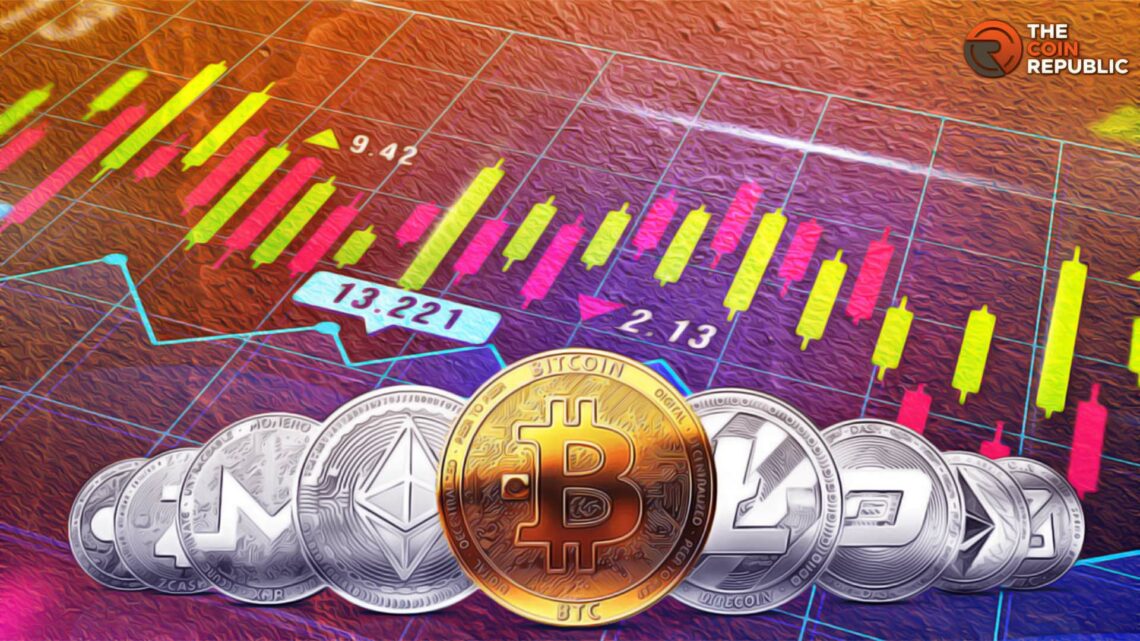- 1 Traders can explore trading ranges for significant movement.
- 2 Trading ranges offer potential trading opportunities.
The cryptocurrency market is well-known for its volatility and bull runs, but a closer look at the charts reveals that Bitcoin also spends a significant amount of time in ranges. Some traders refer to Bitcoin’s current trend as a “sideways trend.” Whether you are a trader or a long-term investor, understanding ranges are essential for determining potential entry and exit points. Let’s explore range trading and see how it can help you get started in the trading industry.
Range Trading
Only about 30% of the time, market trends. This fact poses a challenge for traders hoping to profit from significant movements. The rest of the time markets typically trade in a range, but what does this mean?
When a market consistently oscillates between two prices or levels for an established amount of time, a trading range is created. Range trading can be seen in all time frames, from short-term five-minute charts to long-term daily and monthly charts, just like trend following, which can be used in any time frame.
Type of Ranges
If you want to do profitable trading it’s very important for you to understand the ranges of trading. There are four types of ranges in trading.
- Rectangular range
- Diagonal range
- The continuation range
- The irregular range
Regular range
Prices move horizontally and sideways within a rectangle range. These movements are visible between a lower support and an upper resistance. The rectangle range, which typically has shorter time frames than most other ranges and denotes a moment of consolidation, creates faster trading possibilities.
Diagonal range
Diagonal ranges, which take the form of price channels, are equally common among range traders. The breakouts in this style of range trading typically take place at the antithesis of the trending movement.
The continuation range
The continuation range is the name given to the range trading chart pattern that develops throughout a trend. This range is characterized by flags, wedges, triangles, and pennants, and it typically appears as a correction against prevailing trends.
The irregular range
Support and resistance lines frequently appear around a central pivot line, which is where an irregular trend usually starts. While it might be difficult to identify the support and resistance levels in an irregular range, trading towards the middle pivot axis rather than at extremes can yield a number of possibilities.
Strategies to Use Trading Range
The goal of range-bound trading is to spot and profit from equities that are trading in price channels. A trader can purchase a security at the lower trendline support (the bottom of the channel) and sell it at the upper trendline resistance (the top of the channel) after identifying significant support and resistance levels and linking them with horizontal trendlines.
There are two major strategies used for the trading range are ➖
- Support and resistance
- Breakout and breakdowns
In conclusion, there are numerous opportunities for income generation in a range bound setting. We advise investing the time to understand how ranges operate even if they might not be as exciting as a big bullish trend since doing so will help you make the most of the possibilities that arise in these circumstances.

Andrew is a blockchain developer who developed his interest in cryptocurrencies while pursuing his post-graduation major in blockchain development. He is a keen observer of details and shares his passion for writing, along with coding. His backend knowledge about blockchain helps him give a unique perspective to his writing skills, and a reliable craft at explaining the concepts such as blockchain programming, languages and token minting. He also frequently shares technical details and performance indicators of ICOs and IDOs.


 Home
Home News
News










